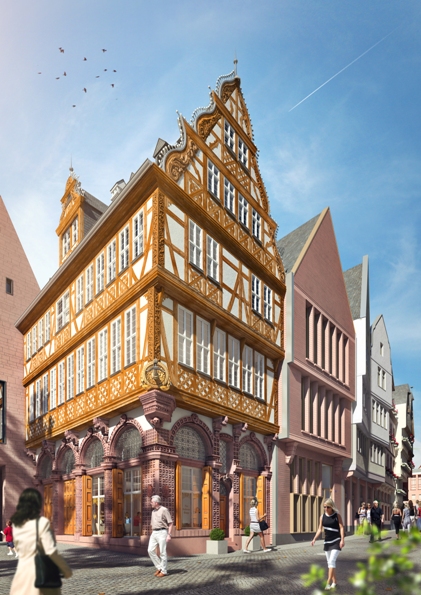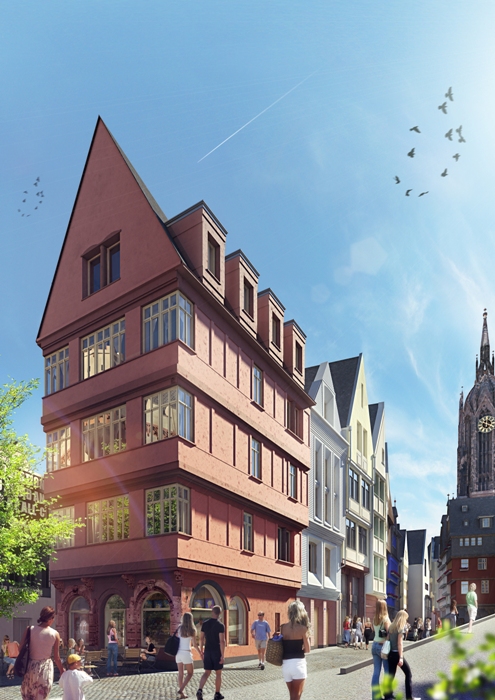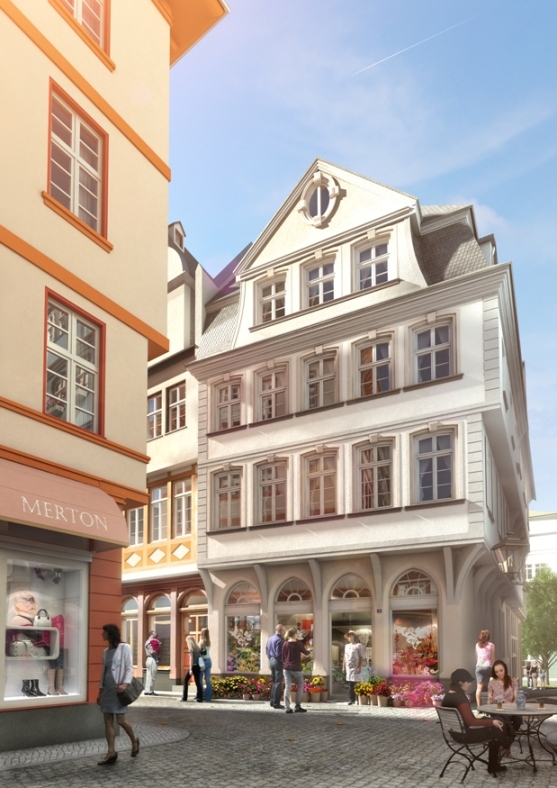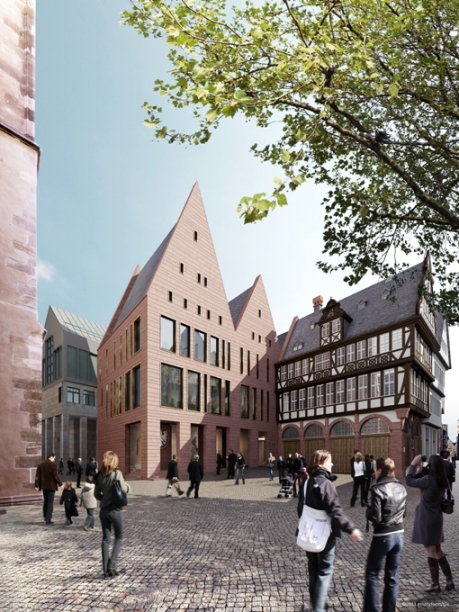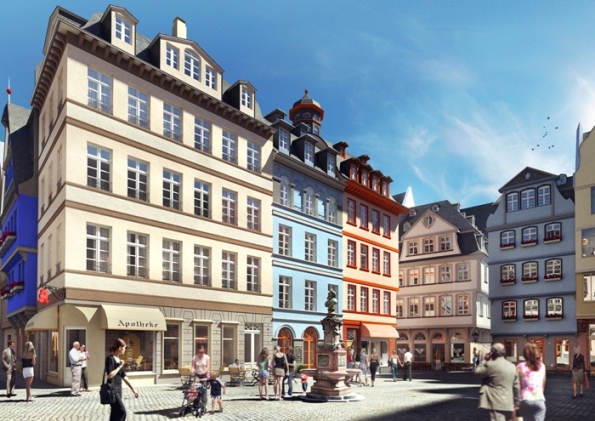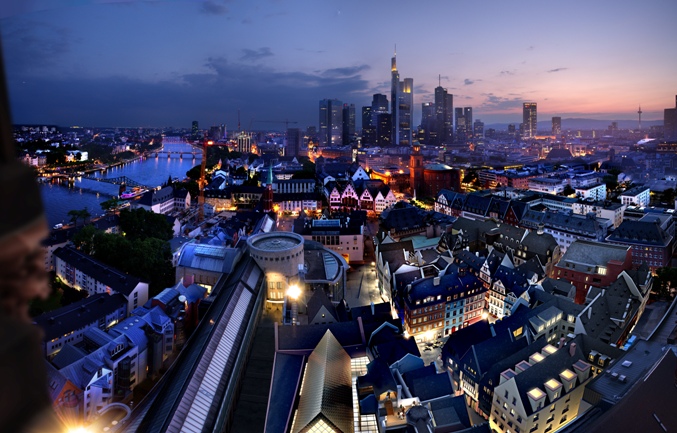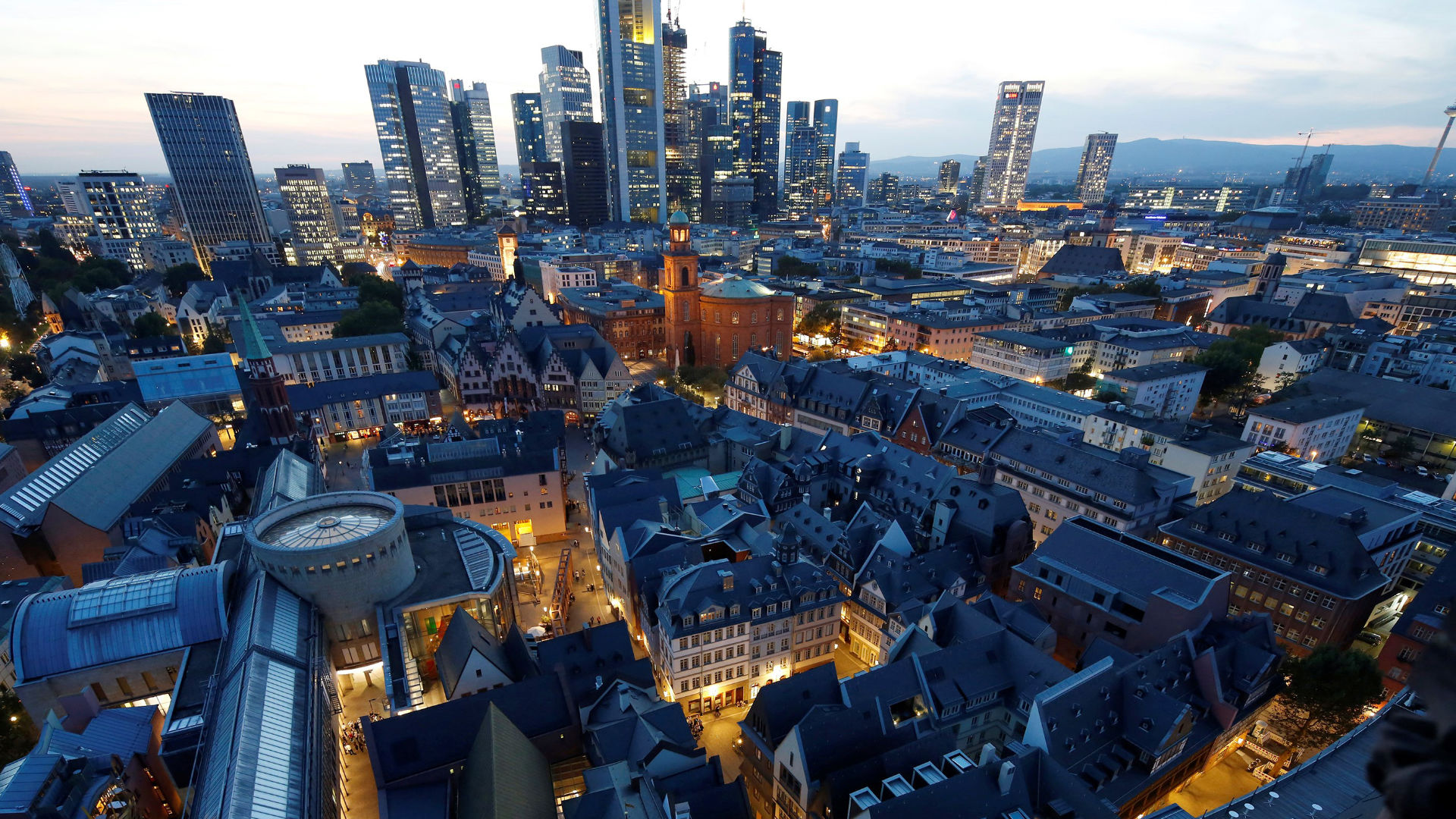Rebuilding Frankfurt's old centre:
New life between the Cathedral and the Römer Square
The DomRömer Quarter is being developed in the heart of Frankfurt and will bring new life to the city's historic centre. Historical alleyways, romantic squares, picturesque courtyards and grand patricians' houses: Until its destruction in the Second World War; the structure of the old city of Frankfurt had grown organically over centuries. The hustle and bustle in the pubs, shops and craftsmen's workshops had always attracted a lot of visitors to the area between the Cathedral, or "Dom" as it is called in German, and the Römer, the main square in the centre of Frankfurt. With the completion of the DomRömer Quarter in 2017, this very special atmosphere will be returning to the heart of Frankfurt.
Historical paving – relaid
If everyone pulls together and the residents of a city are committed to achieving their hearts' desire, then something really special can be created. A prime example of this is the DomRömer Quarter with it successful mixture of old and new built on the historical urban layout.
When the Technical Town Hall in the city centre with its grey concrete walls dating from the 1970s was in need of a major overhaul, many people saw a unique opportunity: The idea was to tear down the unpopular administrative building and restore some of the original character of the old city centre. Over an area of 7,000 m² the old alleyways and squares that were destroyed in the Second World War could be rebuilt. The area between the Cathedral and the Römer was to be lowered to its former level so that people could once again walk along the famous Krönungsweg, the Coronation Path of the German kings and emperors. The idea – which was developed in a planning workshop in conjunction with citizens of the city – received an overwhelming response. After extensive planning work and a decision in a multi-stage architecture competition, the project is now being carried out by the city-owned DomRömer GmbH.
35 houses are being constructed on the historical city layout with a loving attention to detail. 15 reconstructions and 20 new buildings, incorporating typical style elements of Frankfurt's old town, together create a residential area that is typical of an old city centre with a successful mixture of old and new. Around 200 people will make this their new home. As in the past, the quarter will also house little shops, restaurants, premises for local craftsmen and picturesque squares. The new DomRömer Quarter will be a lively residential area and a meeting place for both residents of the city and visitors.
The new "Stadthaus am Markt" (city hall on the market square), will make the quarter even more attractive. It is designed as an event venue and meeting point for all residents. But that is not all. It is built over the Archaeological Garden, providing not only protection but also housing a large and freely accessible exhibition area where these important historical remains are given a modern presentation.
After intensive preparations, overground work began on the 35 old houses in November 2014.
Fakten
The new DomRömer Quarter will…
- cover an area of 7,000 m²
- contain the Stadthaus am Markt and 35 old houses, including
- 15 reconstructions and
- 20 new buildings
- give 200 people a new home in around 80 apartments
- provide around 30 ground floor premises for catering establishments, craftsmen and trade
- offer over 600 parking spaces as well as technical facilities and basements for the old houses in the 20,000 m² DomRömer car park
- be finished at the end of 2017.

